A butterfly’s iridescent coloring is a result of the intricate patterning of thousands of microscopic scales, attached to thin wing membranes. Those scales scatter light in complex ways. Iridescence helps butterflies elude predators.
As you scroll down the page, the magnification progressively increases.
Peacock butterfly (Inachis io). Photo by Lill-Jansskogen.
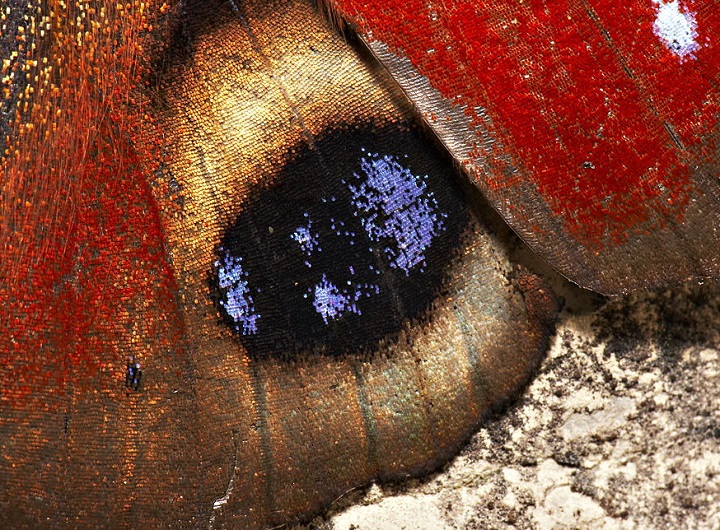
Peacock butterfly (Inachis io). Photo by Michael Apel.
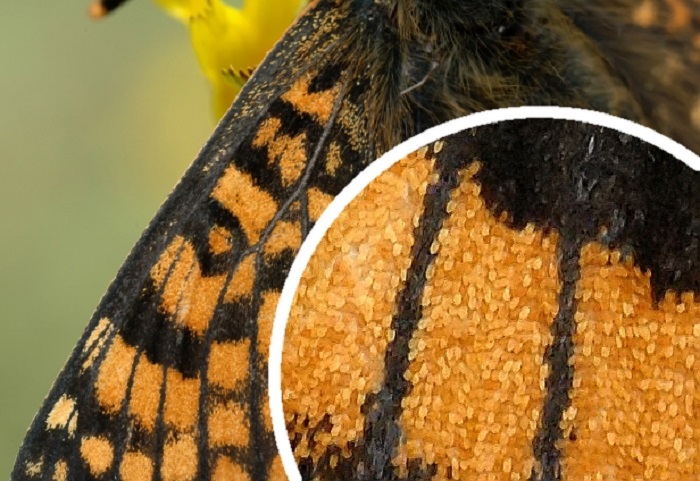
Magnified monarch wing. wikipedia.org
Electron Microscopic Images Of Butterfly Wings
Butterfly wing magnified 50x using Scanning Electron Microscopy Image. Peacock butterfly (Inachis io). wikimedia.org
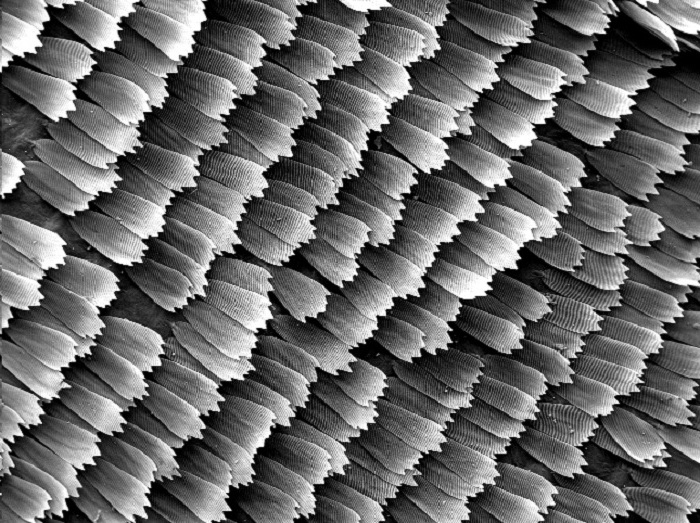
Butterfly wings magnified 100x. wikimedia.org
Butterfly wing scales magnified 200x.
Swallowtail butterfly wing scale detail. Most scales are blade-like and attached with a pedicel. The scales are attached to thin membranes (the four wings) nourished and supported by oxygen enriched veins. The membranes and veins are covered by thousands upon thousands of scales. www.psmicrographs.co.uk
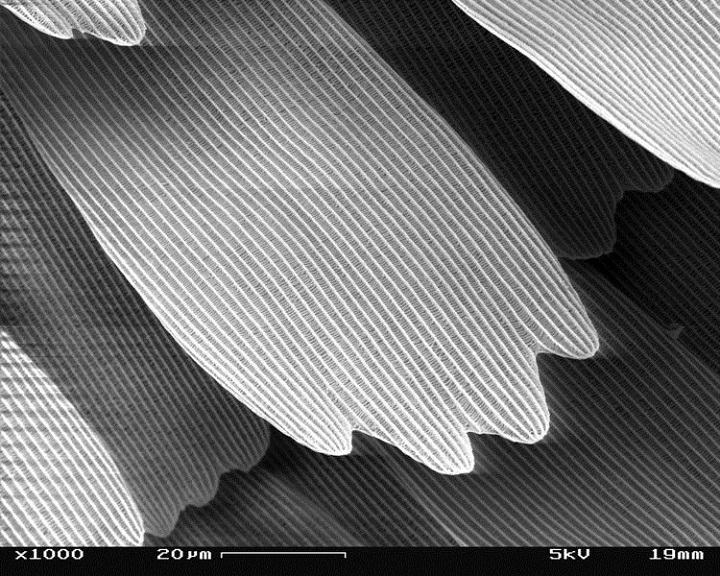
Butterfly wing scales magnified 1000x. Each complex scale is made up of about 40 ribs, the ribs are connected by tiny cross bars.
Butterfly scale magnified 5000x. This is an image of the wavy tip of but one scale. Remember, this structural grid, is what makes up each tiny scale! wikimedia.org

The scale structure also has depth. The ribs are held apart by intricate crossbars. Air spaces also affect light absorption and refraction. Butterfly scales are composed of stacked chitin lamellae. Chitin is a tough, semitransparent substance that is the main component of the exoskeletons of arthropods, such as the shells of crustaceans and the outer coverings of insects. Chitin is also found in the cell walls of certain fungi and algae. www.trincoll.edu
A Butterfly scales’ structural grid diffracts or bends light in different degrees and that interference is what gives butterflies their intensity of color, vibrancy and iridescence. When light hits the complex wing, the multiple reflections compound one another, such as when light hits a scale, that ray of light also interacts with light bouncing off the scale, in this case from numerous differing angles. These compound interactions create iridescence and variety of color.
Butterfly wings receive their color from two sources, from structural color (described above) and ordinary (or pigmented) color. Butterfly scales are also pigmented. Most brown and yellow butterflies get their color from melanin, just like you and I. Even Blue Morphos have a base of melanin. Melanin absorbs light which helps to further intensify a butterfly’s coloration. Other coloring agents are uric acid (white), carotenoid pigments (orange) and flavonoids such as quercetin (red and purple).
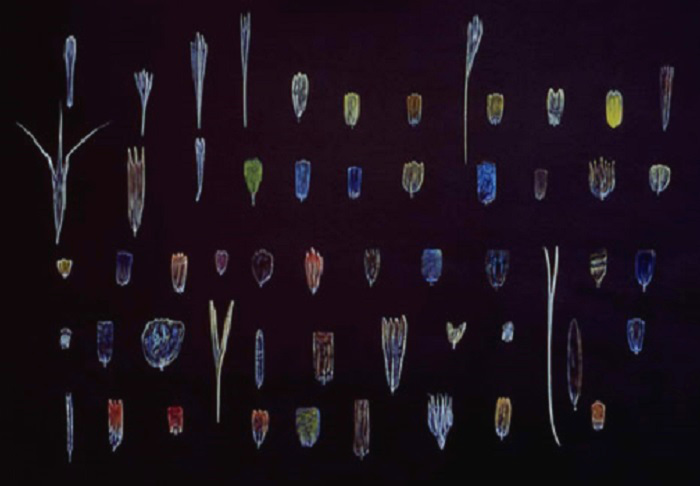
Butterfly wing scale shapes. Some scales have wavy ends, some ends are feathered, some flat with rounded corners. Of course wing scale shape affects aerodynamics. This is a painting by Christina Brodie from a microscope slide by Klaus Kemp, showing 55 different butterfly scales. www.temple-of-flora.com
This butterfly’s scales are flat at the end with rounded corners. Peacock or Green Swallowtail (Papilio blumei). Image by Linden Gledhill. flickr.com
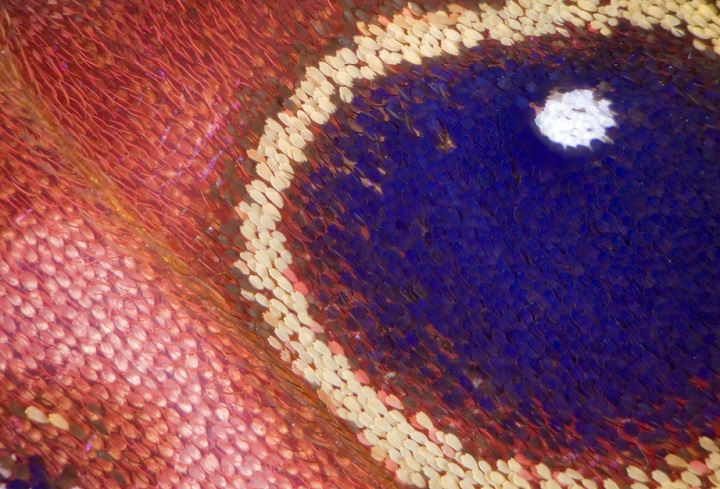
Citharias aurorina wing. Image by Linden Gledhill. flickr.com
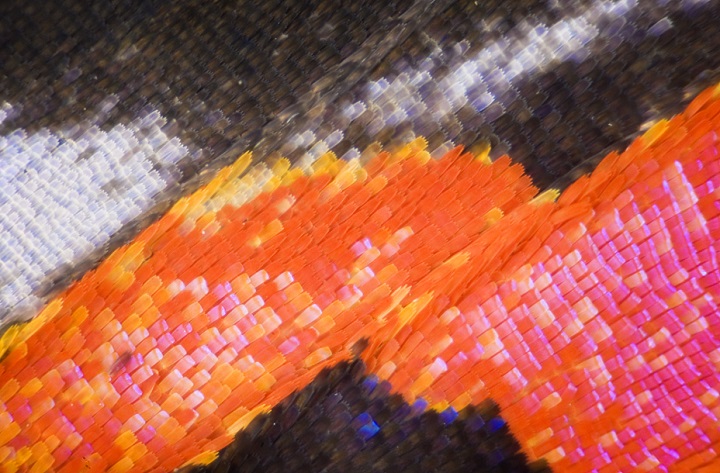
Rhetus dysoni wing. Image by Linden Gledhill. flickr.com

Image of magnified Morpho butterfly wing. Our roofing techniques mimic butterfly wing patterns. www.fei.com
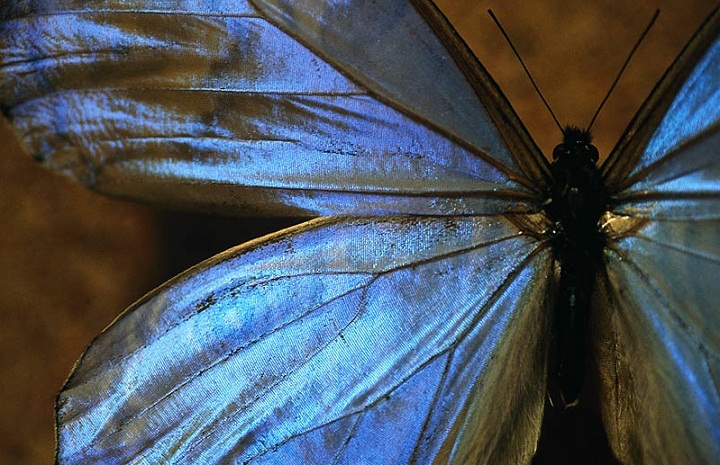
Blue Morpho Butterfly – their wingspan ranges from 3 inches to 8 inches. As opposed to the top sides, the rib scales on the underside of the Morpho’s wing are closer together and smooth, so there is no luminescence bouncing off the bottom of their wings. The underside of the Morpho’s wings mimic foliage; browns, grays, blacks, and reds, so when at rest they are camoflouged into their surroundings. Image by Cary Wolinski.

Scales also help increase the lift to drag ratio in gliding flight. Image copyright: Jay Cossey. www.photographsfromnature.com
Photos of butterfly species and their scale shape: olympusmicro.com
More info: asknature.org
Butterfly Anatomy: enchantedlearning.com

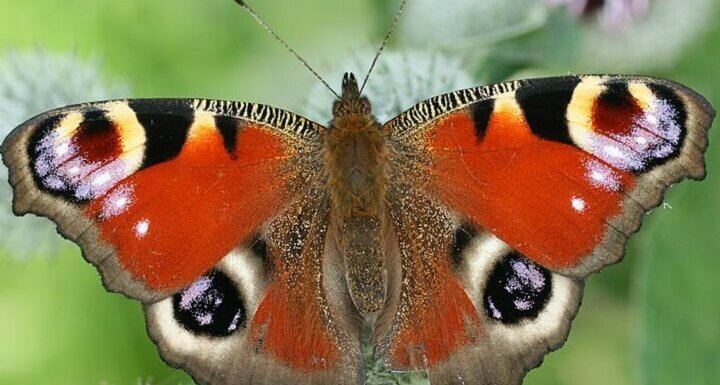
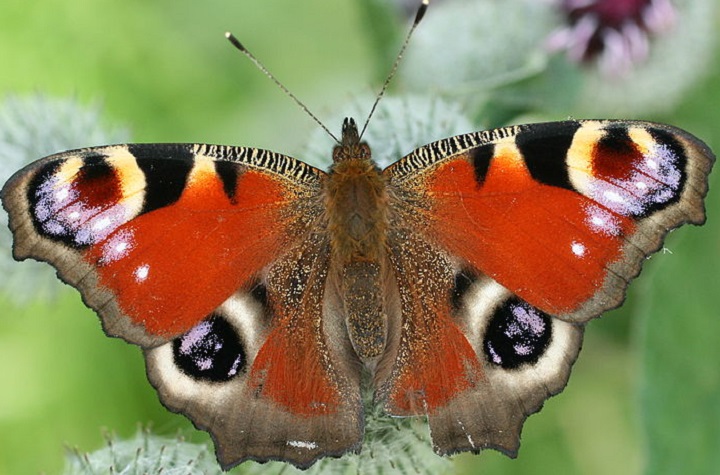


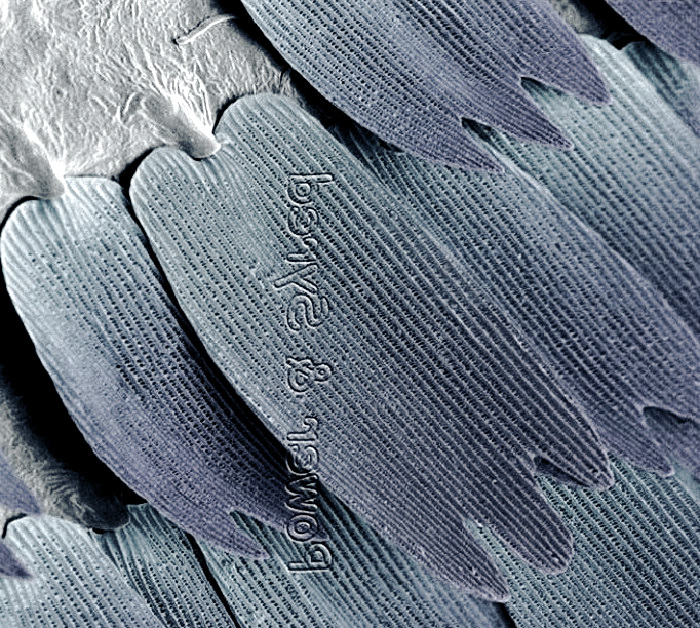
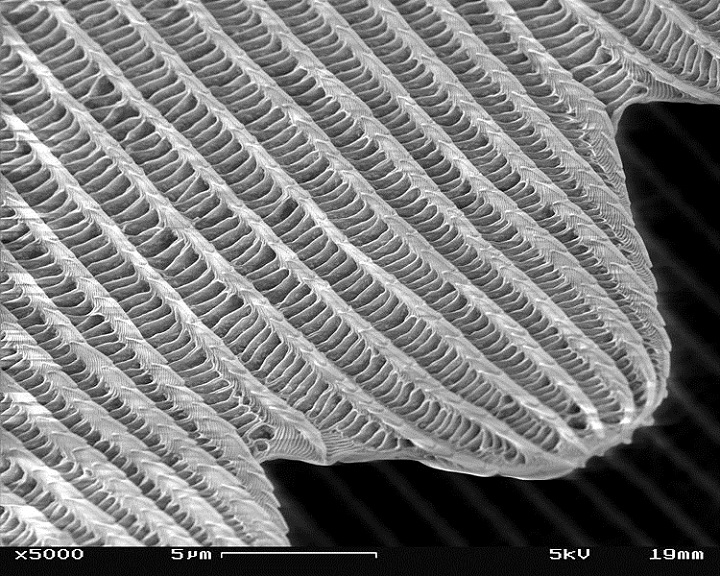
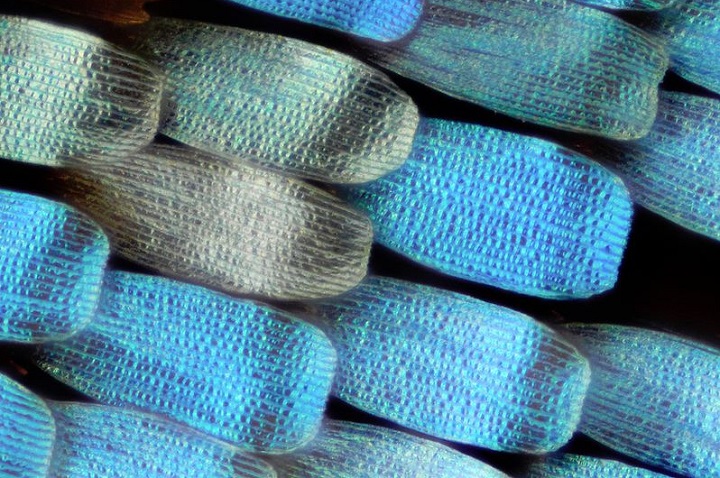














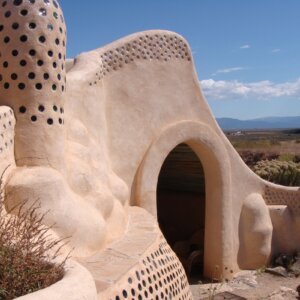

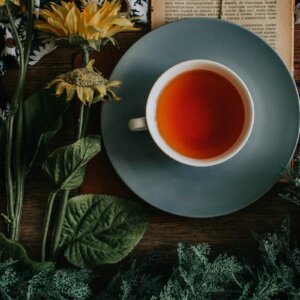























You should add a section to wikipedia if it isn’t there. This is fascinating, and I’m going to make a ref: to you on my facebook page.
Thanks!
Truman
excellent
very very thank you for these good images 🙂
Just wow!
Epic!!!!!!1
I just landed here in 2020. Amazing overview. Thank you.